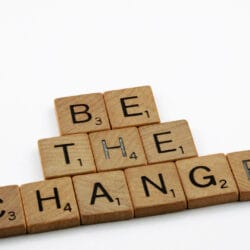Laughter has long been our inbuilt stress buster, and social connector, but it also helps…
As we move further into the 21st century human-centered products and services will become more in need.
We’ve been innovating as far back as humanity exists. The caveman tools helped us forge out shelters and yield crops, and allowed humankind to thrive throughout history.
In the past 100 years innovation has become routine rather than the exception.
Innovation has always been part of our human need to add value to our life and our species, allowing our minds to advance at a vastly faster rate than any other animal on the planet.
We long since realised how the tools we innovate can aid our lives, making us faster, smarter and stronger. No other animal can compete with us, yet as we live in the 21st century the more self-aware we become the more we realise that innovating for innovations sake isn’t going to help us advance anymore.
We need to be smarter and more conscious about the effect the vast production-line of innovation has had, and is still having, on our planet, and on our own minds.
We need to ensure we create innovations that aren’t only human-centred in terms of the better experience or ease of use they create (that is almost a given today), but are more ethically minded in how they can bring the best out of humanity.
We have become huge over-consumers, buying for comfort and instant gratification rather than for value creation.


Of course, living in such a capitalist world on the whole during the last few decades, with specialism and monopolisation at the central goals of businesses, then it’s no wonder we have become such a material-driven society.
With products and services constantly flaunted in our faces, not only by radio or TV adverts, but also now by a constant targeted stream of adverts on mobile screens as we go about our day.
While companies certainly have more of a social responsibility to provide products and services of value rather than of simple wealth creation for themselves, it becomes the consumers who also need to change their ways in how they look at consuming.
We Have To Be More Mindful Of Our Choices
Learning to be more conscious of our buying choices and adopting more minimalist and resourceful habits can help, but WE have to be the ones leading the change in what a product or service should be.
If we all jump in for the next gadget that has just a few more bells and whistles on it then companies continue to sell that to us.
If we are more purposeful in how we want the products and services to aid our health or lifestyle in order to bring the best out of us (rather than just lead us into a heavily influenced drone-like compulsive shopping therapy), then companies begin to shift what they sell in order to align with our more health-minded values.
Now, of course, we have begun to see this shift happen already as more products are focused on health and social responsibility.
However, they often still have a very capitalist base towards them and people are still easily influenced to buy products that are marketed as healthy-minded but which are actually still part of the same capitalist production line of subliminally persuading people to consume more of what they might not even want or need.
Take coffee as an example. It’s addictive properties means we always buy more whether it’s good for us or not, and marketers will angle it the best they can to make coffee sound like it’s a refreshing lifestyle choice to make us feel okay about buying more, rather than noting the potential addictive properties.


Of course, business is business, and it is also jobs, so it is understandable why this occurs.
However, with more and more noise out there to ‘choose’ from (or rather be influenced by) we have unwittingly become more trapped in the consumer cycle of thinking we have to have something just because it exists.
How Can We Change Our Consumer Habits?
So, to change this habit and adjust our buying habit choices, we have to look at just what a product or service can actually provide us.
When we start looking at how products and services start providing us with the benefit then we start opening our ‘design thinking‘ minds.
We first consider what problems exist (both materially and ethically) with what we buy and then inform the sellers of these products what it is we really actually need for it to be more human-centered (or environment-centered – preferably both).
To take it a step further we should always assume that even the newest idea will become old and obsolete at some point in the future as we evolve.
Therefore, adopting the approach of a futurist disrupter is a good mindset to have when thinking of improvements we need.
How To Innovate A Human-Centered Air-Con
Let’s take the air-con as a random example.
We can see air-con as a wonderful innovation. It’s ensured many people are cooler in the summers. You could argue that in itself has saved lives.
However, how could it be improved to be even more human-centred?
The obvious answer is to ensure the materials it’s made of aren’t harmful towards us, that it is built with sustainable materials that are also cost-effective over time. Maybe it could be smaller, or even portable.
The less obvious solution would be to see just how it could solve more problems that aid our life.
So, for example, we could ensure the air-con sucks in and takes away bad air and refreshes the air quality with a more purified form, even act as an air freshener.
While AI has it’s future concerns, there’s clearly also huge steps forward that it can help deliver. With the air-con this could be a tracking program that monitors and measures the air quality and adjusts accordingly.
It could also be set up to regulate air temperature in accordance with a heater function, so it maintains a stable temperature, and reacts to varying temperatures outside so people don’t get sick because of extreme differences in outside and inside temperatures.
It could aid our focus or sleep by ensuring the most conductive air temperatures and air quality to sleep better, acting almost like a natural alarm for our bodies to correlate to.


It could also be linked towards our phone to give us an alert if the air-con has accidentally been left on or set towards a budget app so our energy use stays within a monthly budget.
The app could even then donate excess savings for the month towards other projects towards clean air for people who can’t afford air-con etc.
It might even go further and help us understand our personal ailments or conditions, and as such adapt towards each humans needs.
Once we open the door to new possibilities then we can quickly see how we can innovate better solutions for humanity.
The Shift To Human-Centered Design Begins With Us
Now, to expect a company to suddenly offer all of these features at an affordable price for all straight away is idealistic thinking.
However, when we set the requirements of products to be more human-centred (and more like services that add a function or impacting value), then we, the consumer that are buying the products and services, start the shift in how businesses think, away from purely capitalist selling and buying of just having something for comfort or convenience, towards a more human-centred world where the products and services we buy bring more value to us.
Companies start then begin to innovate solutions that aren’t addiction-hooked gadgets but social innovation solutions that become useful and practical towards our human development, both for our minds and for our planet.
There might be a money-valued system still at play, but it’s likely that the health impact value increases in what companies produce, just like how every product today is now created and designed to be more user-friendly.
User experience is one thing, a good start, but there’s no point in having a good user experience in a product that is designed to simply make you addicted and deter your health in the long run.
We have clearly come to a point where too many people are stuck in their phones and technology, which is slowly turning us into drones, as our minds fall into auto-pilot vicarious living patterns, checking our phones for the slightest update each other minute.


This can’t be good for long-term health. It’s leading people to be less adaptable and agile in thought.
So, the real social responsibility of companies, and consumers, is to ensure we aren’t just innovating products that suck people in but instead aim to get the best out of them.









